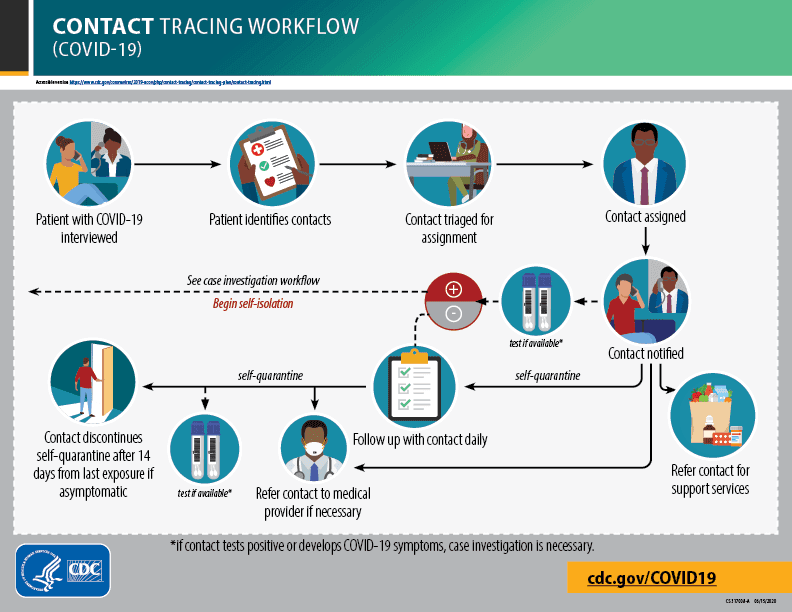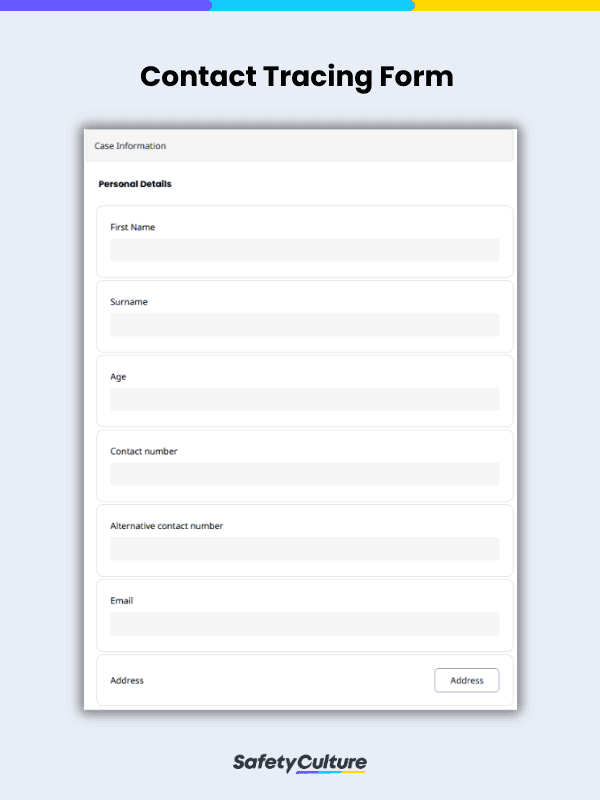What is a Contact Tracing Form?
A contact tracing form is a document that helps health professionals determine who a sick person caught an illness from and track every possible person they have been in contact with while infectious. It helps effectively carry out the contact tracing process, guide those who have been exposed on what to do next, and prevent onward transmission of a disease, such as COVID-19.
Importance of Contact Tracing Amidst The COVID-19 Pandemic
Even before the current COVID-19 pandemic, contact tracing has been used to help contain the transmission of infectious global diseases, such as measles, Ebola (2014), and SARS-CoV(2002); with the current COVID-19 pandemic the world is facing, contact tracing especially plays a vital role in breaking the chains of human-to-human transmission of the SARS-CoV-2 coronavirus, which can be spread by people who have no symptoms.
In the context of COVID-19, contact tracing requires identifying persons, listed on a contact tracing form, who may have been exposed to a person with COVID-19 and following them up daily for 14 days from the last point of exposure. As COVID-19 transmission can happen before symptoms appear, contacts should remain in self-quarantine during the 14-day monitoring period to restrain the possibility of exposing other people to infection should they become ill.
With contact tracing, all potential cases are identified, quarantined, and followed-up to ensure rapid isolation, testing, and treatment in case they develop symptoms. The process also helps public officials develop appropriate policy decisions around stay at home orders, travel restrictions, and economic shutdowns. Along with the proper implementation of testing, social distancing, and quarantine protocols, contact tracing serves as an essential public health strategy against epidemics.
Contact Tracing: How Is It Done?
The World Health Organization (WHO) has summarized the contact tracing process into three basic steps:

Contact identification
Once someone is confirmed as infected with a virus, contacts are identified by asking about the person’s activities and the activities and roles of the people around them since onset of illness. Contacts can be anyone who has been in contact with an infected person: family members, work colleagues, friends, or health care providers. All of these should be properly recorded on the contact tracing form.
Contact listing
All persons considered to have contact with the infected person should be listed as contacts. Efforts should be made to identify every listed contact and to inform them of their contact status, what it means, the actions that will follow, and the importance of receiving early care if they develop symptoms. Contacts should also be provided with information about prevention of the disease. In some cases, quarantine or isolation is required for high risk contacts, either at home, or in hospital.
Contact follow-up
Regular follow-up should be conducted with all contacts to monitor for symptoms and test for signs of infection.



